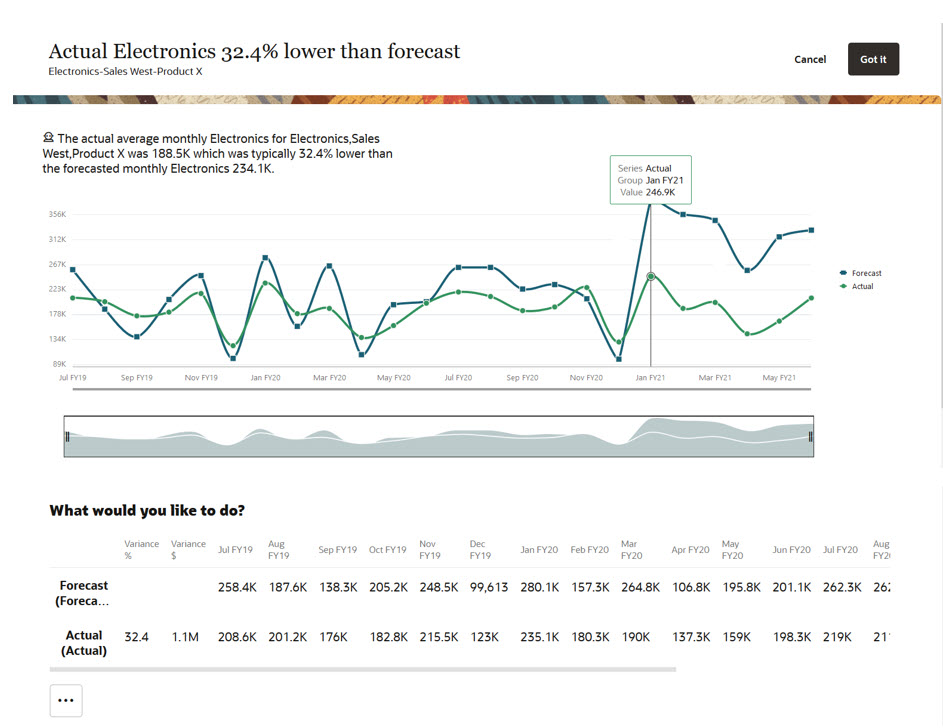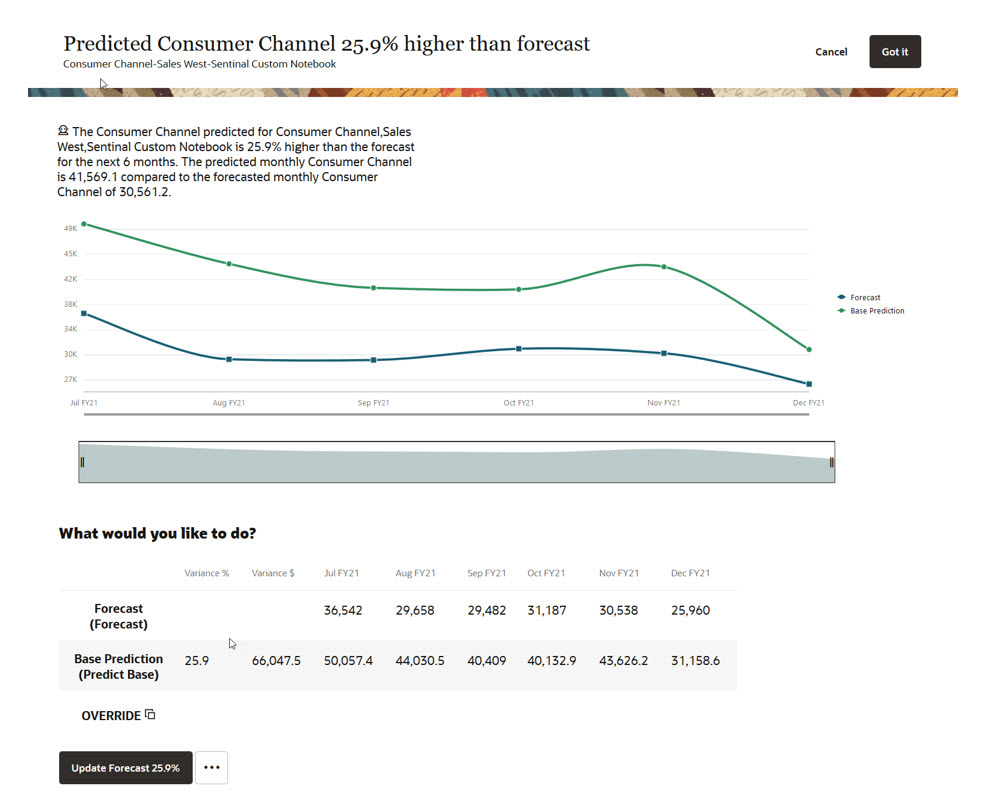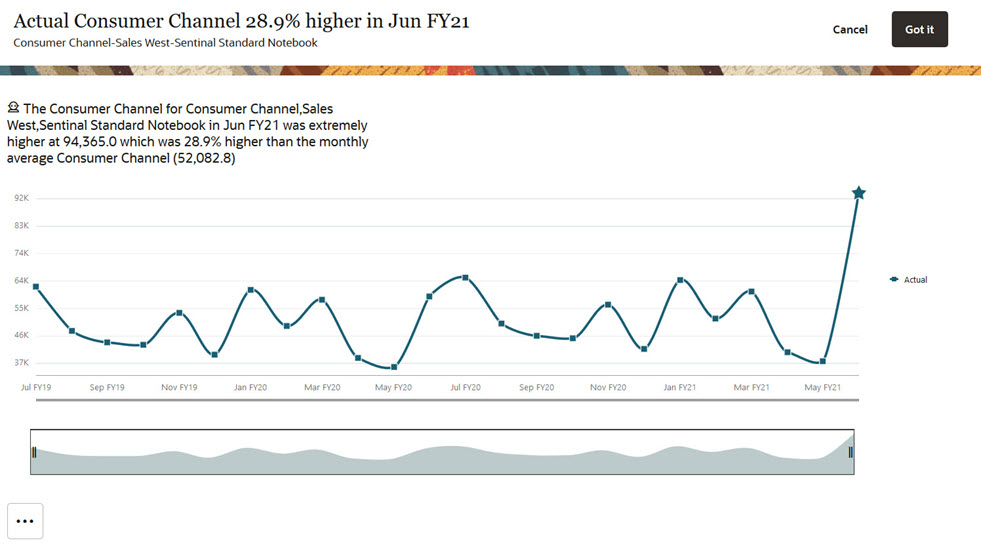About IPM Insights
IPM Insights empowers finance and operational users with data science optimized for multidimensional planning, and forecasting use cases.
IPM Insights analyzes past data and predicted data, helping you find patterns and insights into data that you might not have found on your own. Insights can be trends, anomalies, forecast bias, or variations. With IPM Insights, the insight discovery phase of the planning process is automated with data science and financial pattern recognition, enhancing your forecast effectiveness. Using IPM Insights, you can analyze and explore data across any account. IPM Insights automates processing large amounts of multidimensional data, so that as new actuals come into the system, you quickly detect patterns in your data or hidden correlations, streamlining reporting, improving your forecasting, and strengthening your decision making. You spend less time in analysis, saving time in the overall planning process.
IPM Insights offers these benefits:
- Reduces time spent in data analysis
- Minimizes hidden biases
- Improves forecast accuracy and reliability, enhancing forecast effectiveness with informed decision-making
- Encourages collaboration with your colleagues
- Helps you detect trends early to enhance strategic decision-making
IPM Insights provides these types of insights, using historical and predicted data:
- Forecast variance and bias insights reveal hidden bias in forecasts submitted
by planners by analyzing historical data. This type of insight measures the variance
or bias between two historical scenarios such as Forecasts and Actuals, and
calculates the percentage of risk associated with the current forecast.
Forecast variance indicates the level accuracy of the forecasts submitted by planners. Forecast bias indicates the tendency of the direction of forecast error. For example, a tendency to forecast in excess of the actuals is called the over-forecasting bias; a tendency to forecast below the actuals is called the under-forecasting bias.
IPM Insights triggers an insight when either the variance or risk crosses the specified threshold.
- Prediction insights help you uncover significant
deviations in forecasts compared to predicted values. This type of insight looks for
variances between two future scenarios such as forecasts and computer-generated
predictions, and can calculate a measure of risk, for example the risk of meeting a
target forecast.
By comparing a planner’s forecast with a machine-generated prediction, prediction insights measure the variance as well as the presence of any hidden bias (a planner’s tendency towards over-forecasting or under-forecasting).
IPM Insights triggers an insight when either the variance or bias crosses the specified threshold.
- Anomaly insights detect unusual patterns in historical data that deviate from
expected results. This type of insight detects outlier values that vary widely from
other values, for example, a sudden volatility in actuals compared to the base
level, or missing actuals data.
Anomalies can result from key business actions or they could contain valuable information about a hidden trend.
Anomalies in historical data can also result from events that historically led to spikes or declines in the data. You can choose to take these spikes or declines into consideration during insight generation, so that historical spikes or declines are also reflected in future predictions.
IPM Insights triggers an insight when an outlier measure crosses the specified threshold.
To get started with IPM Insights, administrators configure insights and then run them, and can schedule them to run on a regular basis.
Planners can then review and analyze insights in a dashboard, and take appropriate action to improve the forecast.
Figure 16-1 Forecast Variance and Bias Insight

Figure 16-2 Prediction Insight

Figure 16-3 Anomaly Insight

Videos
| Your Goal | Watch This |
|---|---|
|
This overview introduces you to Insights. Insights empowers finance and operational users with data science optimized for multidimensional planning and forecasting use cases. Insights analyzes past data and predicted data, helping you find patterns and insights into data that you might not have found on your own. You can evaluate those insights and take action on them. |
|